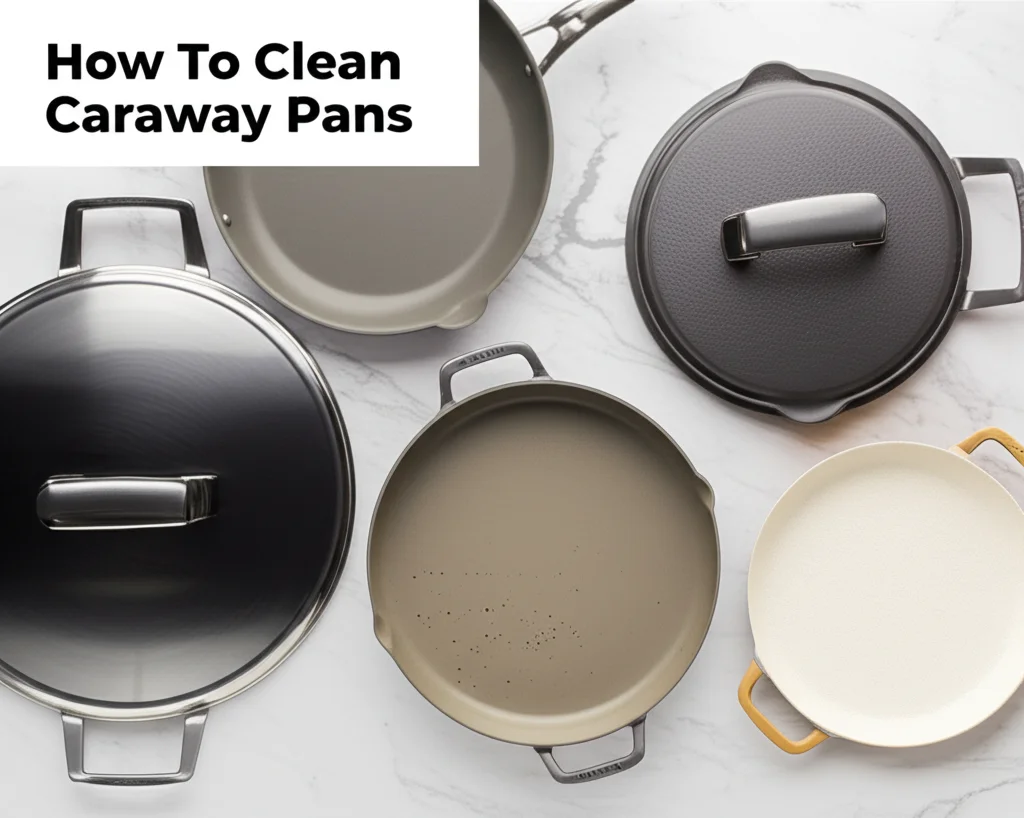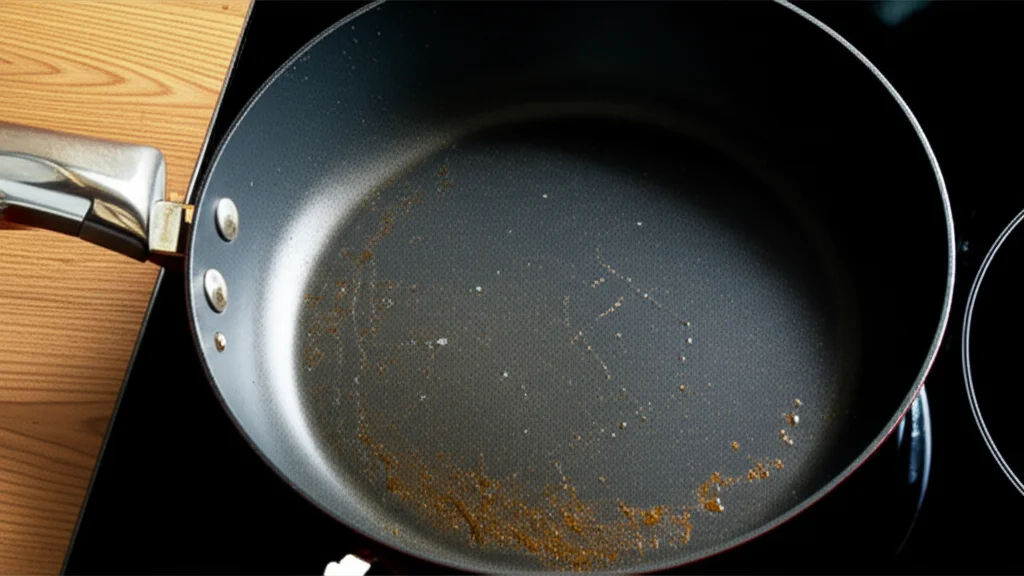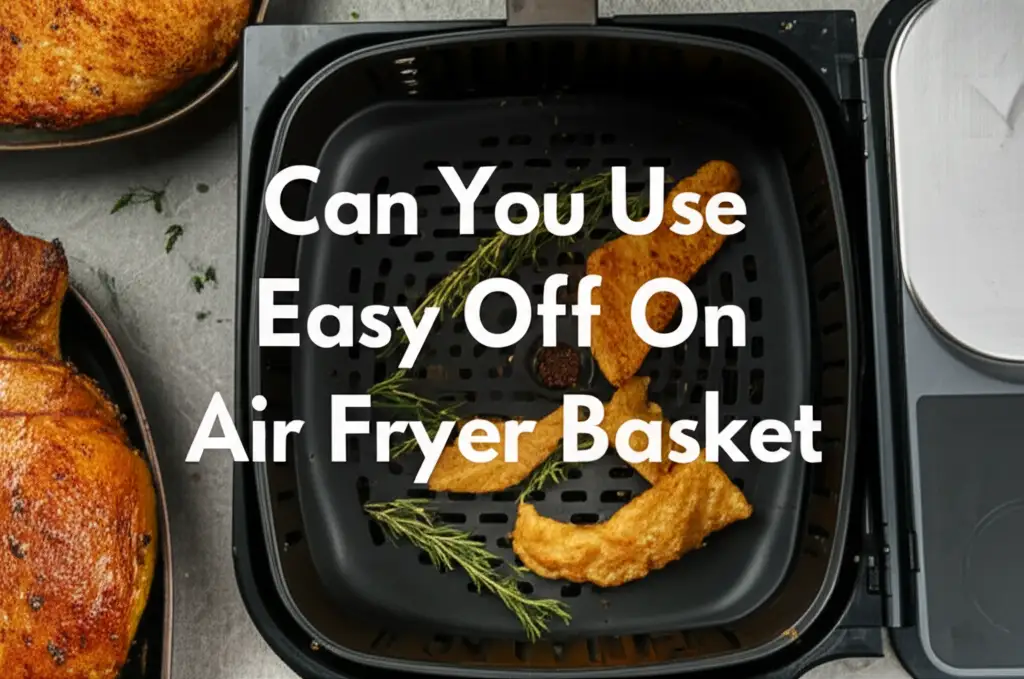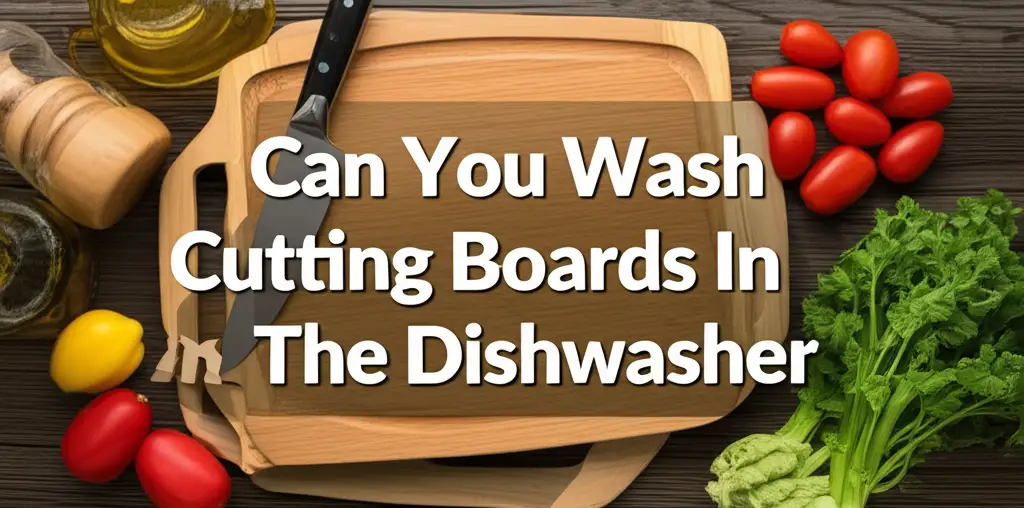· Todd Martin · Kitchen Cleaning · 14 min read
How To Clean Caraway Pans

Unlock the Shine: How To Clean Caraway Pans Effectively
Caraway pans have become a favorite in many kitchens. Their beautiful design and non-toxic ceramic coating offer a pleasant cooking experience. People choose Caraway for health reasons and ease of use. However, like all cookware, they need proper care to maintain their performance and looks. Cleaning them correctly is key to their long life.
Many users wonder about the best ways to clean Caraway pans without damaging the special non-stick surface. Standard cleaning methods for other pans may not work for Caraway. Harsh scrubbers or strong chemicals can ruin the ceramic coating. This article shares the best practices for cleaning your Caraway pans. We cover daily care, tackling tough stains, and maintaining their non-stick properties. You will learn easy steps to keep your Caraway cookware looking new.
Takeaway
Keeping your Caraway pans in top condition requires gentle, consistent care.
- Always hand wash your Caraway pans with warm, soapy water.
- Use only soft sponges or cloths for cleaning.
- Avoid abrasive cleaners, metal tools, and dishwashers.
- Address burnt-on food quickly with a soak and baking soda paste.
- Clean the exterior regularly to prevent buildup and maintain appearance.
To clean Caraway pans, gently hand wash them with warm water and mild dish soap using a soft sponge or cloth. Avoid abrasive scrubbers, harsh chemicals, or dishwashers, as these can damage the ceramic non-stick coating. For stubborn spots, a baking soda paste and a short soak work best.
Understanding Your Caraway Pans: The Ceramic Advantage
Caraway pans stand out because of their ceramic non-stick coating. This coating is free from harmful chemicals like PTFE and PFOA. It provides a naturally slick surface for cooking. This design makes Caraway pans a healthier choice for many families. Understanding this unique material is the first step to proper cleaning.
Ceramic coatings are durable, but they are also sensitive to harsh treatment. Abrasive materials can scratch the surface. Strong chemicals can break down the non-stick properties over time. Heat also impacts the coating, so proper cooling before cleaning is important. We want to protect the smooth, non-stick finish. This keeps food from sticking and makes clean-up easy. Gentle care ensures your pans last for years.
The non-stick surface works best when it is smooth and free of residue. Even a thin layer of burnt oil or food can make the pan seem less non-stick. This is not because the coating failed. It means the pan needs a good, gentle cleaning. Regular, proper cleaning prevents buildup. It keeps your Caraway pans performing like new. For general guidance on maintaining all your cooking tools, you can explore tips on how to clean pots and pans.
Daily Cleaning Rituals for Your Caraway Pans
Daily cleaning is simple and essential for Caraway pans. This keeps them clean and extends their life. Always clean your pan after each use. This prevents food from hardening on the surface. Hardened food is more difficult to remove later.
Immediate Cleaning After Use
Let the pan cool completely before washing it. Pouring cold water into a hot pan can cause thermal shock. This shock can warp the pan or damage the ceramic coating. Once cool, fill the pan with warm water. Add a small amount of mild dish soap. Let it sit for a few minutes. This softens any food particles.
Use a soft sponge or cloth to wipe the pan clean. The non-stick surface makes most food slide off easily. Rinse the pan thoroughly with warm water. Make sure no soap residue remains. Dry the pan completely with a clean towel. Storing a wet pan can lead to water spots. It may also promote bacterial growth. Following these steps helps maintain the pan’s performance.
Choosing the Right Cleaning Tools
The right tools protect your Caraway pan’s ceramic coating. Use only non-abrasive sponges. Microfiber cloths or silicone scrubbers are also good choices. Avoid steel wool, abrasive pads, or harsh bristle brushes. These tools scratch the delicate ceramic surface. Scratches reduce the non-stick quality. They can also lead to food sticking more often.
Always use mild, non-citrus dish soaps. Strong detergents can harm the coating over time. Natural soaps are often best. They clean effectively without harsh chemicals. This approach keeps your pans safe and effective for cooking. For caring for other types of non-stick cookware, such as Circulon, the principles are similar; you can find more guidance on how to clean Circulon pans for further insights on gentle non-stick care.
Tackling Stubborn Stains and Burnt-On Food
Even with daily care, sometimes food sticks or burns. This can happen if the heat is too high or if oil burns. Do not panic if you see stubborn stains on your Caraway pan. There are safe ways to clean them without damage. These methods use gentle ingredients.
The Power of Soaking
Soaking is your best friend for stuck-on food. Fill the pan with warm water. Add a tablespoon of mild dish soap. Let it soak for 15-30 minutes. For very stubborn messes, you can let it soak for a few hours or even overnight. The water and soap work to loosen the food particles. This makes them easier to wipe away.
After soaking, gently scrape the softened food with a wooden or silicone spatula. Never use metal spatulas or knives on the pan. Then, use a soft sponge to wipe the remaining residue. Rinse the pan well. This method is effective for general baked-on food. For more general advice on tough residues, learn how to clean baked-on grease from pans.
Baking Soda Magic for Tough Spots
Baking soda is a mild abrasive and a powerful cleaner. It is safe for Caraway pans. Make a paste using baking soda and a small amount of water. Apply this paste directly to the stained or burnt areas. Let the paste sit for 10-15 minutes. This allows the baking soda to break down the grime.
After waiting, gently scrub the area with a soft sponge or cloth. Use circular motions. You will see the stain lift away. Rinse the pan thoroughly to remove all baking soda residue. This method is excellent for light discoloration or tough spots. For more specific burnt grease problems, especially on the bottom of frying pans, other methods might apply, as detailed in guides like how to clean burnt grease from bottom of frying pans. Using baking soda for cleaning is a versatile approach, as seen in tips for how to clean stainless steel pans with baking soda.
Cleaning the Exterior and Bottom of Your Caraway Pans
While the inside of your Caraway pan gets most of the attention, the outside needs care too. Grease, food splatters, and heat discoloration can build up. This affects the pan’s appearance. Cleaning the exterior helps your pans look good. It also prevents burnt-on grease from becoming permanent.
The exterior of Caraway pans is often coated with a durable paint finish. This finish is also sensitive to harsh chemicals and abrasive scrubbing. Just like the interior, gentle cleaning is essential. Regular wiping after each use can prevent most buildup. Use warm, soapy water and a soft cloth for daily exterior cleaning.
For more stubborn grease or discoloration on the outside, a baking soda paste works well here too. Mix baking soda with a little water to form a paste. Apply it to the affected areas. Let it sit for 10-20 minutes. Gently scrub with a non-abrasive sponge or a soft brush. Rinse thoroughly. This method is effective for removing light grease and grime. For detailed instructions on pan exteriors, review how to clean outside bottom of pans.
Sometimes, the very bottom of the pan can develop tough, baked-on grease stains. These often come from oils splattering on the burner. For these areas, a slightly more targeted approach might be needed. You can use a stronger paste of baking soda and a few drops of white vinegar. Apply the paste and let it sit for a longer period, perhaps 30 minutes to an hour. The fizzing action helps loosen the grime. Always test this on a small, hidden area first, though the exterior finish is generally robust. Cleaning the bottom of any pan helps maintain its heating efficiency. Discover more about how to clean the bottom of the pan. If you’re dealing with specific grease stains, a general guide on how to clean grease stains can also provide helpful techniques.
Restoring Non-Stick Performance and Preventing Future Issues
Caraway pans boast a high-performance non-stick surface. This surface is designed to release food easily. Over time, or with improper care, pans can seem to lose their non-stick properties. This is usually due to residue buildup, not a worn-out coating. Restoring non-stick performance involves deep cleaning and good cooking habits.
The ceramic non-stick coating on Caraway pans does not require traditional “re-seasoning” with oil. Unlike cast iron, ceramic surfaces do not absorb oils to create a non-stick layer. Instead, their non-stick quality comes from the smooth, slick nature of the ceramic itself. If food starts to stick, it almost always means there is a thin layer of burnt oil or food residue. This layer acts as a barrier, preventing the pan from being truly non-stick.
To restore performance, perform a thorough deep clean. Use the baking soda paste method as described earlier. You can also try a boil-and-simmer method. Fill the pan with water and a few tablespoons of baking soda. Bring it to a simmer for 10-15 minutes. Let it cool, then clean gently. This helps lift embedded residues. Once clean, the pan’s non-stick properties should return.
Preventing future issues is crucial for maintaining your Caraway pans. Avoid using high heat settings. Medium-low heat is sufficient for most cooking on ceramic non-stick. Always use a small amount of oil or butter. This helps with food release and protects the surface. Never use cooking sprays. These sprays can leave a sticky residue that is hard to remove. This residue builds up and ruins the non-stick. Store your pans properly. Use the pan protectors that come with Caraway sets. These prevent scratches when stacking pans. These simple steps keep your pans performing beautifully.
What to Avoid When Cleaning Caraway Pans
To ensure your Caraway pans last, you must know what cleaning methods to avoid. Using the wrong tools or cleaners can quickly damage the ceramic non-stick coating. This damage reduces the pan’s effectiveness and shortens its lifespan. Avoiding these common mistakes is as important as knowing the right way to clean.
First and foremost, never put your Caraway pans in the dishwasher. Dishwashers use harsh detergents. They also expose pans to very high water temperatures and strong water jets. These conditions are too aggressive for the delicate ceramic coating. They can cause the coating to degrade, chip, or become less non-stick. Always hand wash your Caraway pans. This preserves their integrity.
Second, steer clear of abrasive cleaning tools. This includes steel wool pads, scouring powders, and rough sponges. These materials will scratch the ceramic surface. Even small scratches can allow food to stick more easily. Over time, many scratches can ruin the non-stick property completely. Stick to soft sponges, microfiber cloths, or silicone scrubbers.
Third, avoid harsh chemical cleaners. Bleach, oven cleaners, and other strong degreasers are too aggressive for Caraway pans. They can break down the ceramic coating. This not only affects performance but also raises concerns about harmful residues. Always use mild, pH-neutral dish soaps. Natural cleaning solutions like baking soda and water are generally safe and effective for tougher spots.
Lastly, do not use metal utensils in your Caraway pans. While not strictly a cleaning tip, it ties into surface protection. Metal spatulas, spoons, or whisks can scratch the non-stick coating during cooking. These scratches make cleaning harder and reduce the non-stick efficiency. Always use silicone, wood, or nylon utensils to protect the pan’s surface. By avoiding these common pitfalls, you will keep your Caraway pans in excellent condition for many years of healthy cooking.
Deep Cleaning and Revitalization for Caraway Pans
Sometimes, regular cleaning is not enough. Your Caraway pans might develop a hazy film or stubborn discoloration. This happens from cooking oils polymerizing or from mineral deposits in water. When this occurs, a gentle deep cleaning can revitalize your pans. It brings back their original shine and non-stick performance.
A simple deep cleaning method uses baking soda and water. Fill your pan with enough water to cover any discolored areas. Add 2-3 tablespoons of baking soda. Bring the mixture to a boil. Reduce the heat and let it simmer for 10-15 minutes. This gentle boiling helps to loosen stubborn residue and mineral buildup. After simmering, let the water cool completely in the pan.
Once the water is cool, discard it. Use a soft sponge or cloth to gently scrub the interior and exterior of the pan. You will find that most of the haze or discoloration wipes away easily. For any remaining stubborn spots, you can apply a fresh baking soda paste and gently scrub. Rinse the pan thoroughly with warm water. Ensure all baking soda residue is gone. Dry the pan completely with a clean towel.
This deep cleaning process helps to remove invisible layers of residue. These layers can build up over time. They make the pan less efficient at releasing food. It restores the pan’s slick surface. Regular deep cleaning, perhaps once a month or as needed, helps maintain your Caraway pans’ long-term performance. This prevents issues like food sticking. It also keeps them looking their best.
FAQ Section
Q1: Can I put Caraway pans in the dishwasher?
No, you should never put Caraway pans in the dishwasher. The harsh detergents, high temperatures, and strong water jets used in dishwashers can damage the ceramic non-stick coating. Always hand wash your Caraway pans with warm, soapy water and a soft sponge to preserve their quality.
Q2: How do I remove burnt food from Caraway pans?
For burnt food, first let the pan cool. Then, fill it with warm, soapy water and let it soak for at least 15-30 minutes, or longer for tough messes. After soaking, gently scrape with a wooden or silicone spatula. For stubborn spots, make a paste of baking soda and water, apply it, let it sit, then gently scrub with a soft sponge.
Q3: Is it safe to use vinegar on Caraway pans?
Yes, diluted white vinegar is generally safe for cleaning Caraway pans, especially for mineral spots or light discoloration. Mix equal parts water and white vinegar. Use it to wipe down the pan or add a splash to soaking water. Always rinse thoroughly afterward to remove any vinegar residue.
Q4: How often should I deep clean my Caraway pans?
Deep clean your Caraway pans as needed. If you notice a hazy film, discoloration, or reduced non-stick performance, it is time for a deep clean. For most users, deep cleaning once a month or every few months is sufficient to maintain optimal pan condition and performance.
Q5: Why is my Caraway pan losing its non-stick?
If your Caraway pan is losing its non-stick properties, it is usually due to residue buildup from oils or food, not a failing coating. Overheating or using cooking sprays can create this residue. A thorough deep cleaning with baking soda is typically effective at restoring the non-stick surface.
Q6: Can I use oil to restore the non-stick surface of my Caraway pan?
No, Caraway pans have a ceramic non-stick coating that does not require re-seasoning with oil like cast iron. Their non-stick properties come from the ceramic itself. If food is sticking, it means there is a residue buildup that needs to be cleaned off, not that the pan needs oil to be “re-seasoned.”
Conclusion
Keeping your Caraway pans in excellent condition ensures they remain a joy to use in your kitchen. We have covered the simple yet effective methods for how to clean Caraway pans, from daily washing to tackling stubborn residues. Remember, the key is gentle care. The ceramic non-stick coating thrives when treated with respect. Always choose soft cleaning tools and mild soaps.
By following these guidelines, you protect your investment. Your Caraway pans will continue to offer effortless food release and beautiful cooking results. Proper care extends the life of your cookware. It also keeps your cooking experience healthy and enjoyable. Take these steps to heart. You will ensure your Caraway pans shine brightly for many meals to come. Embrace these simple habits to make cleaning Caraway pans a breeze. Your pans will thank you by performing perfectly for years.





